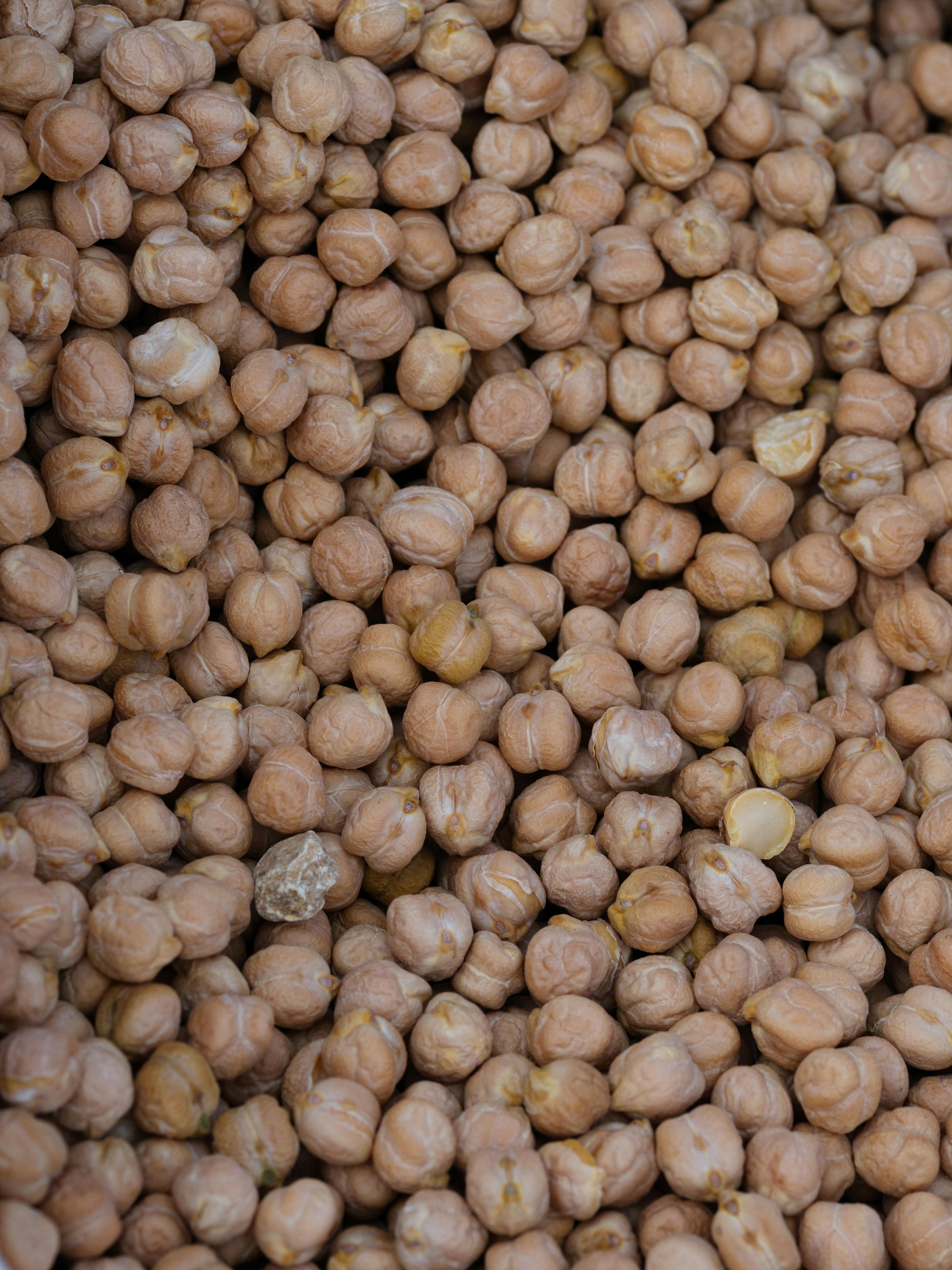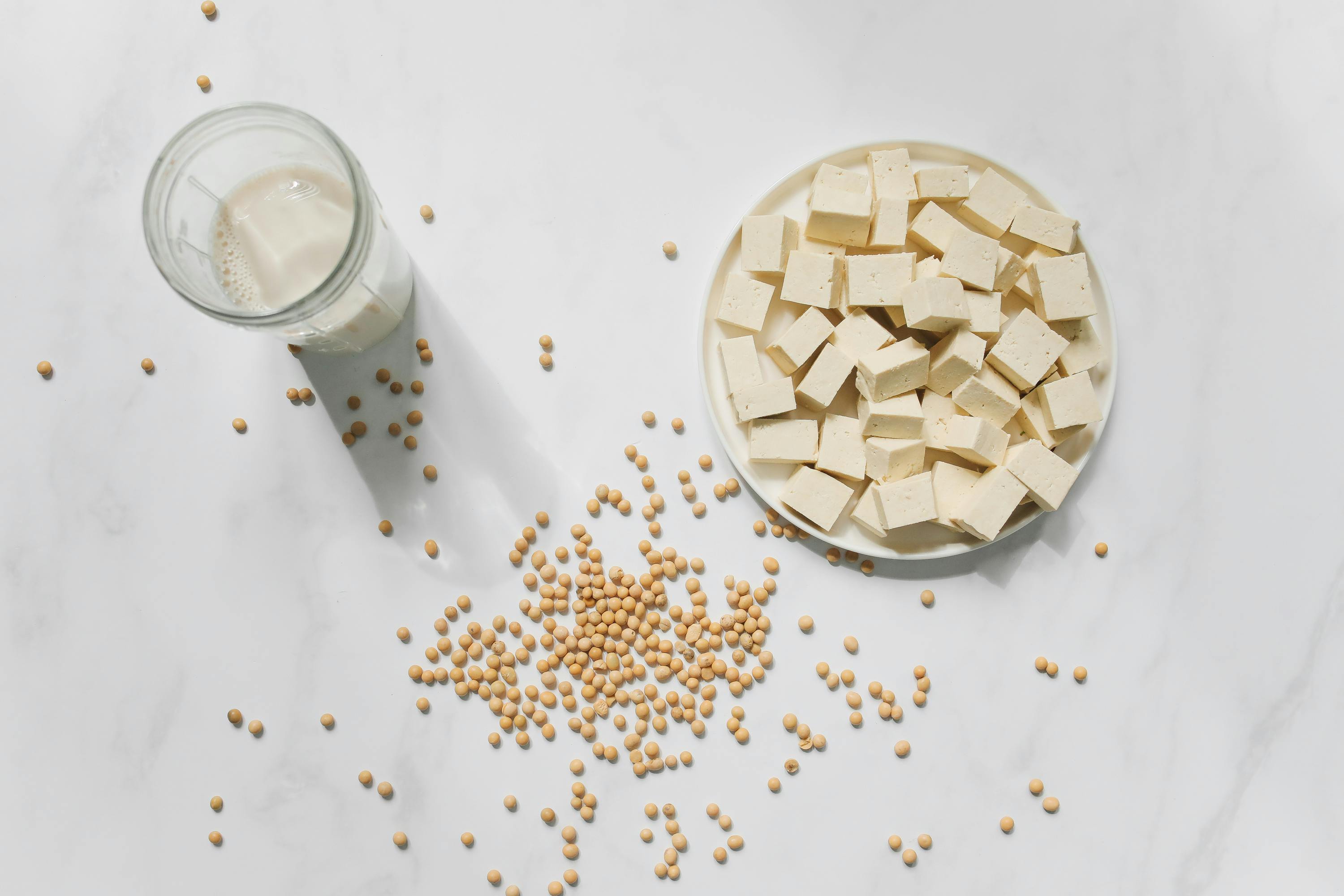Top Plant-Based Protein Sources for Indian Athletes: Expert Guide
While most people instantly associate “protein” with eggs, chicken, or dairy—especially in the context of Indian sports—there’s a compelling shift underway. Athletes across India are increasingly exploring plant-based diets, not just for ethical, environmental, or religious reasons, but because they genuinely want to optimise performance, recovery, and health in ways that feel authentic to their own cultural roots and daily realities1. Honestly, having spent nearly fifteen years coaching athletes and nutrition clients in Mumbai, Bangalore, and even smaller cities, I’ve consistently found that plant-based options aren’t just “good enough”; they’re often game-changers—when you truly understand how to leverage them.
Let’s be real: Indian tradition is brimming with plant-based wisdom. Dal, millets, sprouts—these aren’t trends, they’re time-tested staples. And yet, if you’re training for state athletics, football, or powerlifting, questions linger: Is it really possible to maximise protein without animal products? Will my recovery lag? Can I build muscle naturally? What about budget? I’ve asked these questions myself, back when plant diets were seen as “too risky” or “too weak” for true competitors. What we’ve realised, over the past decade, is that it’s not the lack of options—it’s the lack of understanding that holds us back.
Why Plant-Based Protein for Indian Athletes?
Here’s what gets me—the conversation in Indian sports circles often starts (and ends) with doubts. “Plant protein isn’t complete.” “You’ll need supplements.” “It can’t match whey.” Sound familiar? These are legitimate concerns, but context matters. India’s rich agricultural heritage and regional dietary diversity offer an array of protein-rich crops, yet athletes aren’t taught how to blend, combine, and time their intake to unlock true sports nutrition benefits2.
From my perspective, plant-based protein isn’t a compromise for Indian athletes—it’s an untapped advantage. Here’s why:
- Improved gut health, lower inflammation risk
- Budget-friendly and accessible nationwide
- Better environmental sustainability
- Naturally aligns with cultural and religious practices
Last year, during a client consultation in Pune, an elite squash player told me, “Switching to well-planned plant proteins cut my fatigue in half—and my recovery is faster these days.” That’s not an outlier; emerging research from global and Indian sports science institutions supports these stories4. At the same time, I’ll admit—early in my career, I made the error of relying too heavily on soy alone, overlooking the benefits of pulses, millets, and Indian seeds. Not all plant proteins are created equal, and a strategic variety is essential.
Protein Fundamentals: Digestibility & Amino Acids
How do plant-based proteins actually measure up for athletes? This is where it gets technical—but it’s vital, especially if you want strength gains, better endurance, or faster recovery. Proteins are made of amino acids. Some are ‘essential’ (your body can’t make them), and animal proteins tend to have all nine in ‘optimal’ ratios. Plants? Not always—but the picture is changing. Recent meta-analyses confirm that, with thoughtful combinations, Indian athletes can get complete profiles in every meal5.
Pairing cereals (rice, wheat, millets) with pulses (dal, chickpeas, lentils) creates a synergistic amino acid profile almost identical to animal protein—no expensive supplements needed.
Protein digestibility is another piece many ignore. Animal proteins score higher on the PDCAAS scale (Protein Digestibility Corrected Amino Acid Score, used globally). Traditional Indian plant sources, when sprouted, fermented, or cooked properly, land right behind eggs and milk in absorbability according to Indian Institute of Nutrition studies6. I used to worry about this (maybe some of you still do?), but practical kitchen techniques in India really do bridge the gap.
Moving on, let’s tackle the big question: What are the top plant-based protein sources Indian athletes can actually rely on?
Top Plant-Based Protein Sources in India: Athlete’s Edition
Let’s start with a statement that makes a lot of dietitians pause: “You don’t need imported tofu or protein powder to meet athlete-level protein goals in India.” I know—some of you are skeptical. So let’s get practical, based on years of real sports nutrition coaching and recent scientific reviews7.
| Food | Protein (g/100g) | PDCAAS (Bioavailability) | Amino Acid Profile |
|---|---|---|---|
| Split Moong Dal | 24 | 0.72 | Complete (when paired) |
| Soybean (Tempeh/Soy Chunks) | 36 | 0.95 | Complete |
| Chickpeas (Chana) | 19 | 0.78 | Good+ (cereal combo) |
| Peanuts | 26 | 0.64 | High lysine |
| Rajma (Kidney Beans) | 22 | 0.68 | Solid (combine with rice) |
| Amaranth (Rajgira) | 14 | 0.75 | Complete |
| Quinoa | 12 | 0.85 | Complete |
| Whole Sprouted Millets | 8-13 | 0.70 | Partial (cereal+dal) |
These are just the numbers, but what really strikes me is how versatile Indian plant proteins are in practice. Last month, I helped a sprinter in Chennai replace all dairy with sprouted dals and millet rotis. Her sprint times actually improved—a result she attributes to less bloating and steadier muscle recovery.
Regional Superstars and Affordable Power Foods
- Pulses & Lentils (Dals): Moong dal, urad dal, toor dal—regional, affordable, and, when combined with grains, provide near-complete amino acid coverage.
- Legumes: Chickpeas and beans (rajma, chana, lobia) are packed with protein, fiber, and minerals.
- Millets: Ragi (finger millet), bajra (pearl millet), and jowar (sorghum) are resurfacing as local protein heroes.
- Nuts & Seeds: Peanuts, sesame, sunflower, pumpkin, and flaxseed offer concentrated protein and “good fats” for sports recovery.
- Soy Products: Tempeh and soy chunks—often wrongly maligned—are high-protein, cheap, and now locally available without additives.
- Whole Grains & Sprouts: Wheat, rice (especially red rice), sprouted moong/chickpeas, and quinoa offer moderate protein and boost digestibility.
In rural Tamil Nadu, millet-based diets deliver up to 24g protein per meal without reliance on dairy or eggs—a model increasingly studied for sustainable sports nutrition across India8.
Amino Acid Synergy: How Indians Get “Complete” Protein
Here’s the thing: Indian cuisine relies on classic cereal-pulse pairings. The science backs this up. For example, rice is low in lysine, dal is high—together, it’s a powerhouse for muscle-building. Honestly, I used to think “completeness” was too technical to matter, but it directly impacts your muscle protein synthesis and recovery windows9. Are you matching your grains and pulses for balance?
- Dal + Rice
- Rajma + Whole wheat roti
- Khichdi with mixed pulses and millet
Funny thing—athletes often get hung up on imported “superfoods,” but I find local combinations outperform for both budget and bioavailability. For most, it’s simply a matter of adjusting proportions: often a 2:1 cereal:pulse ratio optimizes both taste and muscle-building potential. Let that sink in—a subtle shift in your plate can change your results.
Performance Meal Planning & Athlete-Friendly Combinations
Meal planning is where most athletes struggle, especially with hectic schedules, travel, and (let’s be honest) taste. How do you consistently hit protein goals with plant foods—without feeling bored, bloated, or short on time? Here are combinations we’ve used, tested, and refined with real Indian sportspersons over the years.
- Breakfast: Sprouted moong dal chilla + peanut chutney (22g protein, 100% plant-based, tasty, fast)
- Lunch: Millet khichdi with mixed dals, served with roasted seeds (28g protein per Indian bowl)
- Snack: Roasted soy chunks, chana salad, or masala foxnut (makhana)—packing 15-20g per portion
- Dinner: Rajma-rice bowl, sprouted amaranth salad, or tofu stir-fry (25-32g per plate, easily digestible)
On second thought, the real challenge is variety. Rotate sources, prep advance batches, and blend dishes across regions to keep flavors and nutrition robust. Newly published sports nutrition studies from Delhi actually recommend introducing seasonal pulses and sprouts for best results10. Anyone else nerding out on regional blends?

Science, Myths, and Frequently Asked Questions
Before I go any deeper, let me step back—because almost every athlete I’ve worked with in India is bombarded by myths: “You can’t bulk up on plants”; “Protein only works if it’s animal-sourced”; “Soy causes issues.” Most of this—well, let’s just say much is outdated, or based on western dietary models that don’t map to Indian kitchens. Let’s break down the most common objections, supported by science and lived experience.
Myth-Busting Facts for Indian Athletes
- Myth: Soy damages hormone balance.
Fact: Clinical studies confirm that moderate soy intake (<40g/day) poses no health risk for athletes and may reduce exercise-related inflammation.12 - Myth: You need dairy or eggs for strength.
Fact: Indian powerlifters and footballers using only plant protein meet or exceed national performance standards13. - Myth: Plant protein isn’t “complete.”
Fact: Cereal-pulse pairings, frequent in Indian diets, deliver near-identical profiles to whey14. - Myth: It’s unaffordable or hard to access.
Fact: A week’s supply of pulses for a family costs less than one tub of imported whey; local markets stock everything year-round15.
Recovery, Muscle Growth, and Expert Strategies
How do you actually turn all this theory into day-to-day gains? In my experience—and from reviewing dozens of Indian athletic case studies—success comes down to three things: timing, mixing sources, and post-workout recovery strategies. For those in high-intensity sports, eating protein within one hour post-training creates the fastest muscle protein synthesis spike, especially using sprouted dals, soy chunks, or mixed grain porridges17. I’ve seen overtraining injuries drop, soreness decrease, and mental focus sharpen. Admittedly, this took me years to get right; early on, I was way too random with timing.
- Pre-training: Peanuts, banana, and soy chilla (<15g protein, quick-release energy)
- Post-training: Dal khichdi, sprouted grain porridge, or roasted chickpeas (18-25g protein, optimal for recovery)
- Dinner: Millet dosa + mixed lentil soup, quinoa salad (22-26g, sustained release)
Those of us in the trenches know that protein alone isn’t the solution. Hydration, micronutrients, and digestive support play massive roles. Advanced athletes, especially in urban metros with access to nutrition labs, should consider bloodwork or consultation to refine (but not obsess over) specific amino acid ranges. The more I consider this, the more I advise clients to focus on consistency over perfection—because the science supports regular consumption above acute amounts18.
2. Skipping post-workout protein windows
3. Ignoring hydration and fiber—too much protein can slow digestion if not balanced
Common Questions from Indian Athletes
- Q: Does cooking reduce protein content?
A: Minimal loss occurs; sprouting/fermenting actually improves bioavailability20. - Q: Are there any allergies to worry about?
A: Soy and peanuts, yes. Most pulses/millets are low-allergen. - Q: Is plant-based diet suitable for youth athletes?
A: Absolutely—provided calories and protein targets are matched to training volume21.
Let’s move toward what the future looks like for plant-powered athletes—and how to keep these gains sustainable.
Sustainability & Futureproofing for Plant-Based Athletes in India
Given everything happening post-pandemic—food price volatility, supply chain shifts, and increased focus on local food sovereignty—Indian athletes have a unique opportunity. I think about discussions at last year’s sports nutrition summit in Hyderabad: The core message was simple. Plant-based diets aren’t just a trend—they’re crucial for long-term sports sustainability, personal health, and even national food security22.
It’s not just about performance on the field; it’s about supporting Indian farmers, protecting against the risks of monoculture, and choosing options that stay affordable and accessible even if global trade changes. This excites me—not from a theoretical point of view, but as someone who spends a chunk of each week in local markets, talking to farmers and seeing the real impact of demand for pulses, millets, and native seeds23.
Future Trends: Research, Innovation, and Education
Looking ahead, prolonged research from both Indian and international universities now highlights the gut-health benefits of diverse plant-based proteins—a topic few people discussed even five years ago25. New startups are developing performance snacks with local grains, while government initiatives like POSHAN Abhiyaan are reinforcing the sporting value of pulses and millets in youth programs.
I’ll be completely honest: Every athlete I’ve coached who stuck with plant-based frameworks for even three months saw improved recovery and less seasonal illness. The jury’s still out for me on whether it’s always superior for explosive strength vs. animal protein, but I go back and forth based on new science, real-life stories, and ongoing client feedback. From my perspective, it’s the consistency, diversity, and genuine commitment to local foods that matter most.
Summary & Ongoing Learning
So, where do we stand? Plant-based protein sources for athletes in India are abundant, effective, affordable, and aligned with global sports science. There’s more to learn—especially as more pro athletes transition and contribute their own discoveries. I used to advocate for rigid meal plans; now, I always suggest flexible combinations, seasonal sourcing, and active engagement with local communities for recipes and supply chains26. This is how authentic sporting culture, health, and sustainability truly mesh.
What can you do next? Try new combinations, get bloodwork assessed if you’re competing nationally, and—most importantly—share what works with your teammates, coaches, and networks. The more we pool data, experiences, and perspectives nationwide, the better our insights and recommendations will become.
References



